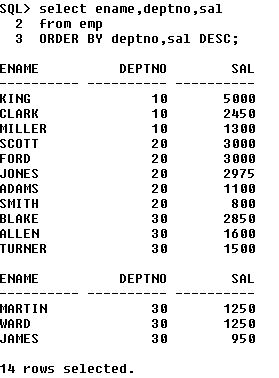Functions are very powerful feature of SQL and can be used to do the following:
- Perform calculations on data.
- Modify individual data items.
- Manipulate output for groups of rows.
- Format dates and numbers for display.
- Convert column data types.
SQL functions sometimes take arguments and always return a value.
There are Two distinct types of functions:
- Single-row functions.
- Multiple-row functions.
Single-Row Functions
These functions operate on single rows only and return one result per row. There are different types single-row functions. This section covers the following ones:
- Character
- Case-manipulation functions
- LOWER
- UPPER
- INITCAP
- Character-manipulation functions
- CONCAT
- SUBSTR
- LENGTH
- INSTR
- LPAD | RPAD
- TRIM
- REPLACE
- Number
- ROUND
- TRUNC
- MOD
- Date
- MONTHS_BETWEEN
- ADD_MONTHS
- NEXT_DAY
- LAST_DAY
- ROUND
- TRUNC
- Conversion
- Implicit data type conversion
- VARCHAR2 OR CHAR ----- TO ----- NUMBER
- VARCHAR2 OR CHAR ----- TO ----- DATE
- NUMBER ----- TO ----- VARCHAR2
- DATE ----- TO ---- VARCHAR2
- Explicit data type conversion
- TO_CHAR
- TO_DATE
- TO_NUMBER
- General
- NVL
- NVL2
- NULLIF
- COALESCE
- CASE
- DECODE
Multiple-Row Functions
Functions can manipulate groups of rows to give one result per group of rows. These functions are known as group functions. This is covered in next Unit.





